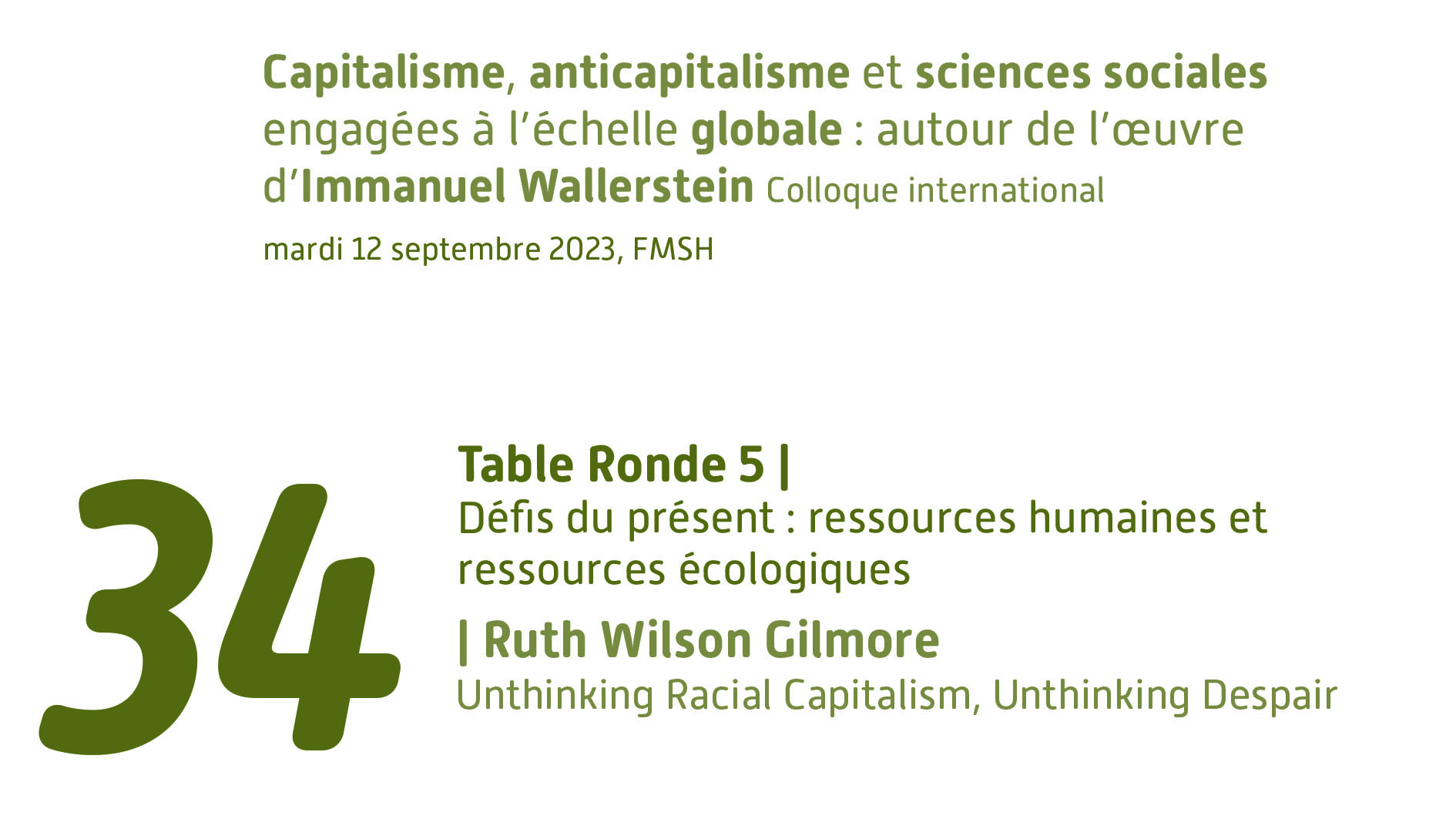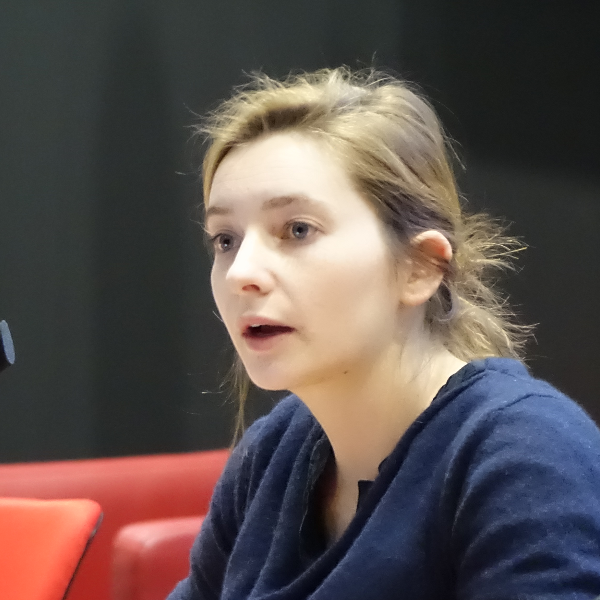Notice
Samples as Sentinels : Anticipating Emerging Diseases at the Human/Animal Interface
- document 1 document 2 document 3
- niveau 1 niveau 2 niveau 3
Descriptif
Samples as Sentinels : Anticipating Emerging Diseases at the Human/Animal Interface
Recent works have been produced at the crossroads of medical anthropology and science studies on the conservation of human tissues in biobanks (Radin 2013). These biobanks allow to answer questions that had not been formulated at the time of the sampling. They also meet the challenge of the extension of consent over the time of clinical research (Weir and Olick 2004). The notion of informed consent is problematic when it is applied to populations who don’t conceive one’s body in terms of individual property. How are these problems reformulated when samples are taken not only from humans but also from animals ? The goal of such techniques is to anticipate human diseases by looking at the circulation of pathogens in animals. Animals are considered as sentinels for diseases that will cross species-barriers – or zoonoses. They provide early warning signals for pathogens whose effect on humans is yet unknown. The term « sentinel » is used in medical anthropology for populations that constitute special targets of surveillance, such as migrant workers for AIDS. The risk of stigmatisation of these populations has been stressed, as it is often the case of the « patient zero » in outbreak narratives (Wald 2008). The notion of sentinel applied to animals allows to reverse this trend : how are new relations between humans and animals produced in the enrolment of animals in disease surveillance (Gramaglia and Sampaio da Silva 2011) ? How do humans understand the biological continuity revealed by this capacity of animals for anticipation ? What kinds of discontinuities does it produce, and do they correlate with species barriers ? If the standardization of tests allows to see continuities where they are perceived discontinuities, discontinuities may appear at another level.I will present a collaborative work done with microbiologists in Asia and Europe on the perception of zoonotic risks. We want to ask people who live in proximity with animals in farms if they would accept to pass serological tests that would reveal pathogens they share with animals. Going beyond the question of informed consent, we want to know how they understand that animals play the role of sentinels for human diseases. By looking at the practices of those who sample humans and animals, and by presenting the questionnaires we build in common to a critical outlook (since we are at the first steps of the project), I want to extend the acceptability of sample conservation not only through time but also between species. This study will reveal different ways in which human/animal relationships that rely on familiarity can be disrupted by the possibility of a zoonosis.
Echantillons sentinelles : l’anticipation des maladies émergentes au niveau animal
Des travaux récents au croisement de l’anthropologie médicale et de la sociologie des sciences ont décrit la conservation des tissus dans des biobanques (Radin 2013). Celles-ci permettent de répondre à des questions qui n’avaient pas été posées au moment du prélèvement. Elles soulèvent aussi le problème de l’extension du consentement au-delà du temps de la recherche clinique (Weir et Olick 2004). La notion de consentement informé est problématique quand elle est appliquée à des populations qui ne conçoivent pas le corps en termes de propriété individuelle. Comment ces problèmes sont-ils reformulés quand les échantillons ne sont pas pris seulement chez les humains mais aussi chez les animaux ? Le but de ces techniques est d’anticiper les maladies humaines en traçant leur circulation chez les animaux. Les animaux sont considérés comme des sentinelles des maladies qui traversent les barrières d’espèces – ou zoonoses. Ils fournissent des signaux d’alerte précoce pour des pathogènes dont les effets sur les humains sont inconnus.Le terme de « sentinelle » est utilisé en anthropologie médicale pour décrire des populations qui constituent des cibles pour la surveillance, comme les travailleurs migrants pour le SIDA en Afrique. Le risque de stigmatisation de ces populations a été souligné lorsqu’elles sont considérées comme « patient zéro » (Wald 2008). La notion de sentinelle permet d’inverser cette perspective en décrivant l’enrôlement des animaux dans la surveillance des menaces environnementales qui affectent les humains (Gramaglia and Sampaio da Silva 2011). Comment les humains comprennent-ils leur continuité biologique avec les autres animaux révélée par le prélèvement d’échantillons ? A quel autre niveau vont-ils déplacer les discontinuités ? Je présenterai un travail de recherche en cours sur l’acceptabilité des échantillons prélevés sur les humains et sur les animaux. Il s’agit de demander à des humains qui vivent à proximité d’animaux s’ils accepteraient de donner ces prélèvements pour révéler les pathogènes qu’ils partagent avec eux. Il s’agit donc d’étendre la question de la conservation des échantillons non seulement à travers le temps mais aussi à travers les espèces.
Dans la même collection
-
Preuves incertaines : échelles, corps et environnements dans les sciences de l’obésité
SanabriaEmiliaUncertain evidence: scales, bodies and environments in obesity science This paper examines the uncertainties raised by flows operating between the production of evidence and the making of policy in
-
-
Geographies of responsibility: Spatial and temporal domaining in virtual drug development
MontgomeryCatherineLezaunJavierGlobal health’s new ‘geographies of responsibility’: Spatial and temporal domaining in virtual drug development The organization, funding and implementation of global health research is undergoing
-
Regulating EBM standards: Guidelines for guideline development
KnaapenLoesRegulating EBM standards: Guidelines for guideline development My doctoral dissertation is entitled In search of standards that avoid standardization: the production and regulation of evidence based
-
Usages politiques et sociaux du registre biomédical
SubhadeeptaRayBauerSusanneBauer Susanne Modeling population health. Reflections on the performativity of epidemiological techniques in the age of genomics Like accounting in the world of business, practices of quantification
-
Experimentality, locality, and the gut: Treatment and the internal frontiers of the body
CousinsThomasExperimentality, locality, and the gut: Treatment and the internal frontiers of the body The paper examines the emerging production of a standardised body of knowledge concerning gut functioning in
-
Weighting bodies in the South Pacific: the BMI index in the Kingdom of Tonga
CottinoGaiaWeighting bodies in the South Pacific: the BMI index in the Kingdom of Tonga Weighting bodies in the South Pacific: the BMI index in the Kingdom of TongaAccording to the 2000 WHO Report on Obesity
-
Savoirs négociés, savoirs traduits
BonvaletPerrineCaremelJean FrançoisGrahamJanice ElizabethBonvalet Perrine Diffusing Medical Knowledge to Developing Countries : The Role of a Medical Network in the AIDS Care Policy in Benin. The prevailing role played by international organizations in
-
Randomised controlled trials, health agencies and consumer organisations
GiamiAlainRandomised controlled trials, health agencies and consumer organisations: the case of Intrinsa and Flibanserin Randomized controlled trials (RCT) are now considered the ‘gold standard’ of clinical
-
Gaborone, Botswana : la constitution d’un site attractif pour la recherche sur les antirétroviraux
ChabrolFannyGaborone, Botswana : constitution of an attractive site for AIDS research : between the production of knowledge and government of population Transnational biomedical research has played a key role
-
Experimental Communities: Mediating locality in clinical trial sites in South Africa
ReynoldsLindseyExperimental Communities: Mediating locality in clinical trial sites in South Africa More than twenty years into the HIV epidemic in South Africa, the impacts of HIV/AIDS and other diseases, and the
-
Le terrain africain dans la construction du calendrier vaccinal français (1970-1990)
ThomasGaëtanStretching comparisons : African field in French vaccination schedule (1970-1990) During the second half part of the twentieth century, epidemiologists of vaccines and infectious diseases had
Sur le même thème
-
Table ronde 5/ Ruth Wilson Gilmore, Unthinking Racial Capitalism, Unthinking Despair
GilmoreRuth WilsonDans le cadre de ses 60 ans, la Fondation Maison des sciences de l'homme organise le colloque international "Capitalisme, anticapitalisme et sciences sociales engagées à l'échelle globale : autour de
-
Paris transformé. Le Marais 1900-1980 : de l’îlot insalubre au secteur sauvegardé Onglets principau…
Historienne de l’urbain, Isabelle Backouche présente son dernier livre en montrant comment s’articulent la gestation et le lancement d’un aménagement parisien et la volonté partagée par plusieurs
-
Risque climatique et réactivité des populations urbaines vulnérabilisées face à la montée des eaux …
Partant des trois principales étapes adaptatives des populations exposées aux risques d'inondation dans l'histoire en France (affolement des populations, débat entre experts et prise de décision)
-
Paysages et environnement en Vallée de Montmorency aux XVIIe et XVIIIe siècles
Entre la décennie 1640 et l’extrême fin du XVIIIe siècle, la vallée de Montmorency constitue, grâce à son environnement, une région privilégiée pour observer les relations que les sociétés humaines
-
Les marins des paroisses littorales et rurales : des terriens comme les autres ? Le cas des côtes n…
Le nombre des pescheurs de Plérin que nous avons vérifié [...] se monte à 40 personnes, dont plusieurs d'entre eux sont classés, et quelques-uns navigateurs terreneuviers, ceux qui ne sont point dans
-
Le rural vu par le prisme des pratiques habitantes : état des lieux et enseignements pour les pouvo…
Le dynamisme des territoires ruraux, leur attractivité sur les plans démographique et économique, ont été permis et reposent aujourd’hui sur une mobilité généralisée, facile et peu chère, qui permet
-
L’infanticide de routine en Italie rurale, XVIe – XVIIIe siècles
Phenomène courant, l’infanticide est largement invisible aux pouvoirs publics laïcs et ecclésiastiques. L'etude porte sur les sex-ratio bases sur le baptême et sur les recensements ecclésiastiques des
-
Renouveau des campagnes françaises : dynamiques sociodémographiques et spatiales
L’intervention consiste en une présentation de la thèse – et de ses prolongements – que j’ai soutenue en décembre 2012 sur la tendance au renouveau démographique des campagnes françaises amorcée dans
-
Les migrants internationaux, acteurs de la transition agricole
Les migrants internationaux, acteurs de la transition agricole. Éclairages à partir des campagnes du Sud-Ouest français Les migrants internationaux sont devenus des acteurs majeurs des systèmes
-
Du périurbain aux campagnes urbaines : habiter autrement la métropole
Le périurbain est passé sous les feux des projecteurs après les années 2000 comme contre-modèle de la ville durable, il est pourtant l'espace de vie de 30 % des Français classés souvent parmi les
-
Nourrir un milliard d'hommes : la politique alimentaire de l'Inde
La menace de famine de 1965 en Inde replongeait celle-ci dans les souvenirs des crises alimentaires coloniales. Pourtant, deux décennies plus tard, grâce à la révolution verte, l'Inde exportait des
-
La mémoire des paysans
Après la révélation qu’a été pour ses nombreux lecteurs La Mémoire des Croquants (1435-1652), Jean-Marc Moriceau poursuit ici sa passionnante enquête sur la vie de nos ancêtres paysans depuis le


























